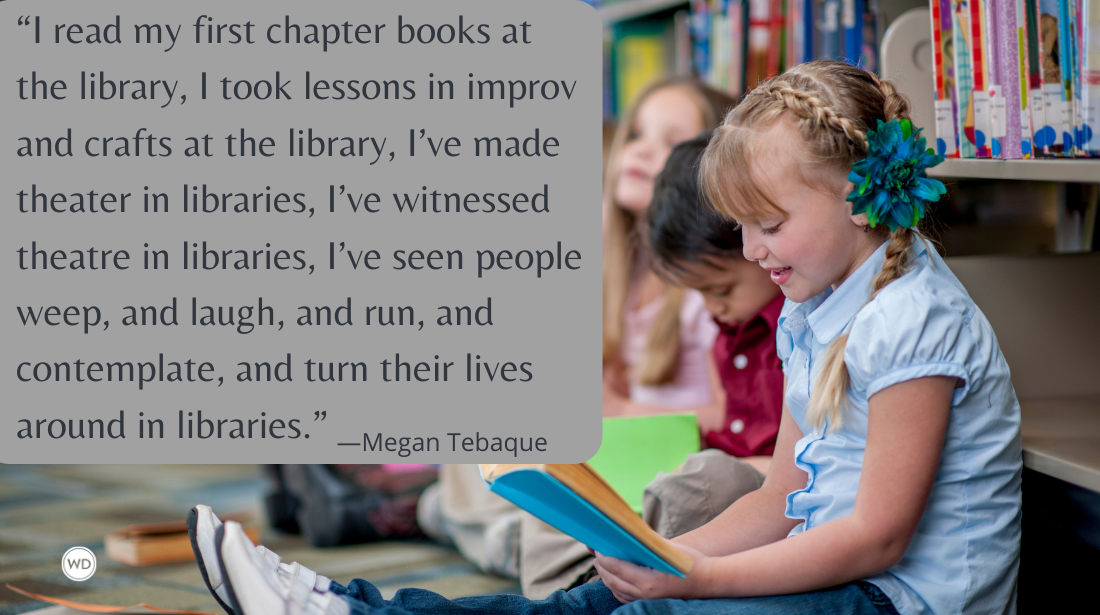We’re a Nation of a Billion Indians, and Yet, I Hardly See Myself in Children’s Books
Middle-grade author Payal Doshi discusses a lack of diversity in children’s books and how her latest release, Rea and the Blood of the Nectar, is working to correct that.
Picture a 12-year-old protagonist who has magic.
Now, be honest.
How many of you thought about a brown-skinned girl with dark eyes and dark hair living in an apartment complex in Mumbai, India? Or one who works in the rice paddy fields of Kerala, or resides in a palatial haveli in Rajasthan, or lives in a tea plantation village in the hill station of Darjeeling?
Not too many of you, I imagine.
As someone who grew up in Mumbai and spent nearly 27 years of her life living there, I wondered why that was. Why was it that when I sat to write a children's fantasy book, I, too, did not imagine a brown-skinned girl from a place I had grown up in?
Why was it that the first 70,000 words of my draft included a 12-year-old protagonist who was white, had a white family, and lived in the English countryside—all the while as I sat at my desk in my home in Mumbai in the sweltering summer heat with the air conditioning on full blast as cawing crows perched on Ashoka trees and rickshaws and lorries blared their horns outside my window in a melody of white noise?
Here’s why. As a kid from the '90s who loved to read, every book I read from The Famous Five to Anne of Green Gables to The Chronicles of Narnia to Sweet Valley High had characters who were white and lived in places completely different from what I had known.
Did anyone sitting in the top floors of publishing offices think, “Shouldn’t kids from non-white cultures see themselves in books too?”
No.
Because they knew this to be true: The themes in children’s books about family, friendship, discovering your identity, navigating school and the trials of growing up, experiencing your first crush, dealing with complex emotions like grief, loss, death, as well as the exhilaration of escaping into fantasy lands and being a hero are themes every kid can relate to no matter the color of their skin, the location of their home, or their race and nationality.
IndieBound | Bookshop | Amazon
[WD uses affiliate links.]
Childhood experiences are universal much like the adult human experience. We all have similar hopes, fears, ambitions, and dreams.
They thought, I postulate, why change something that’s working?
I can’t dispute the fact that books with white characters sell very well in India even though the characters look nothing like us, eat none of the foods we eat or live in towns that aren’t like ours. I, too, loved these books. I loved the characters, related to them, and even had crushes on them (I’m looking at you, Gilbert Blythe).
So, the problem, you ask?
The problem or rather the risk in perpetuating stories primarily about one race or skin color is that it subconsciously trains the formative mind of a child into thinking that those are the only stories worth reading. That their own story, one that they haven’t ever read about or seen portrayed, is not worth telling or celebrating. It diminishes their identity, their experiences, their uniqueness, and their self-worth.
It’s no wonder that there are far fewer writers of South Asian descent or books with South Asian characters submitted to publishers when the percentage of such books published is less than 10 percent (South Asians fall under the broader bracket of Asian/Asian Americans). When you don’t see yourself in books, art, or media, it becomes harder to believe your story is important.
And it doesn’t help that those who want to change that statistic by writing stories to increase representation are met with several roadblocks along the way. Rejection rates in the publishing industry are brutal—it’s no secret—but as an author from another culture, I’ve encountered more specific reasons to explain why my book was "unpublishable" over and above the usual challenges aspiring white authors have had to face. Yet, I persisted. Just like my fellow authors of color have and fellow writers of color are in their mission for equal representation.
A shift is taking place and for that I am grateful. However, it is slow and with far less urgency. We need publishers calling for and acquiring books with representation across all cultures and marginalized backgrounds, we need gatekeepers—teachers, librarians, booksellers—vouching for such books, and we need parents buying these books for their kids without bias against the culture or skin color the books represent.
Until this revolutionary change comes, I’m going to keep writing my stories with flawed, fierce, and fabulous South Asian characters who on adventures, solve mysteries, find love, be heroic, wield magic, and are unapologetically themselves so that in times to come: An agent or editor won’t pass on a book because they’ve already signed with another South Asian author who has written a book with South Asian characters.
Future South Asian writers won’t be asked to make their books "less South Asian" for better marketability while making it "more relatable" to the white audience or make their books "more South Asian" so it can be marketed as the token book "inspired by South Asian culture" or be asked to have their characters "spend more time in their South Asian homes to showcase their struggle with poverty or identity" when the characters have a mystery to solve.
Readers can see that South Asians don’t always have to live lives of hardships, be forced into arranged marriages, or leave their country for a better life. We are a multifaceted community, one that is made up of all sorts of narratives—joyful and complicated—each equally worthy and important.
South Asian kids won’t think twice about telling their beautiful stories and can see themselves in books as kids with full personalities—not one written from stereotypes such as being a math whiz, spelling B champion, or having overbearing parents.
The next time someone asks you to picture a 12-year-old with magic, you might just think of a brown kid from India going off to save the world.
Payal Doshi has a master’s in creative writing (fiction) from The New School, N.Y. Having lived in the U.K. and U.S., she noticed a lack of Indian protagonists in global children’s fiction and one day wrote the opening paragraph to what would become her first children’s novel. She was born and raised in Mumbai, India, and currently resides in Minneapolis, Minn. with her husband and 3-year-old daughter. When she isn’t writing or spending time with her family, you can find her nose deep in a book with a cup of coffee or daydreaming of fantasy realms to send her characters off into. She loves the smell of old, yellowed books. Rea and the Blood of the Nectar, Book 1 in The Chronicles of Astranthia series is her debut middle-grade novel.








